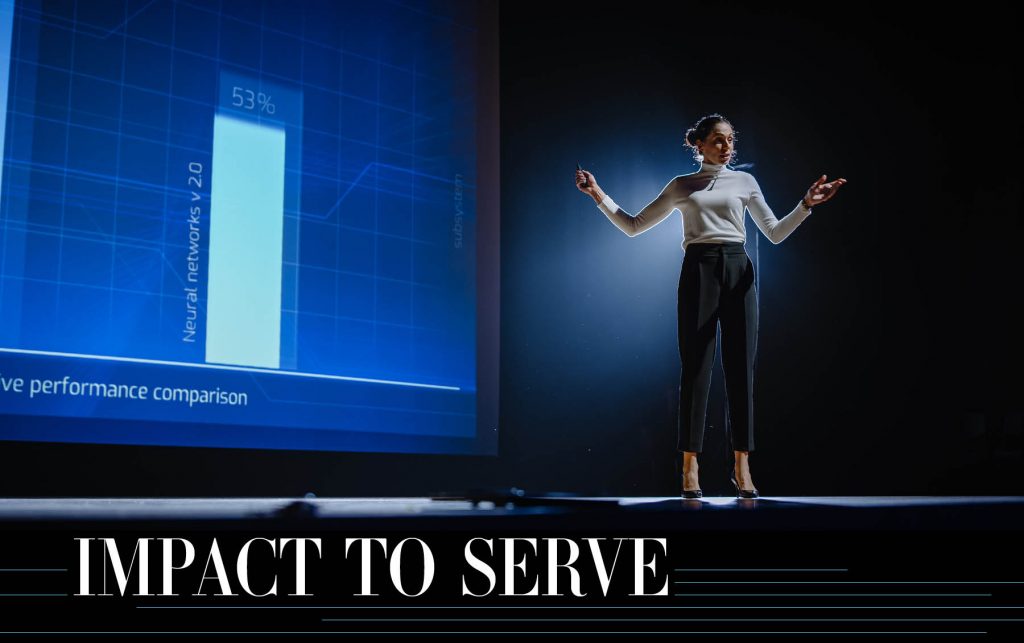Language
You can read the magazine in one of the following languages
Geolocation
You can read the global content or the content from your region


Laura Gerrits experienced her light bulb moment in 2012 while sitting through yet another meeting when working for a Scandinavian financial institution in Denmark.
“That’s when I first realized the reason many CEOs want to have meetings is driven from fear,” says the Founder of CEO coaching company The Holistic Enterprise.
“Fear of losing, or missing something, because while most CEOs want to contribute and serve, meetings are often the only information channels they’ve been taught exist to get the information they need.
“So often meetings are held for the CEO’s sake, not for the good of the company. This was the signal to me there is a lot of space to rethink, redesign and reimagine.”
A former fashion clothing manufacturer and interpreter who speaks five languages, Gerrits started The Holistic Enterprise to mentor CEOs to build more impactful leadership styles.

Calling on the principles of 460BC Greek physician Hippocrates, whose holistic outlook was to care for the whole, not simply the part, Gerrits works with CEOs across Europe and the United States, often remotely, to redesign company structures to interconnect by reigniting purpose – or what she terms ‘impact’.
“CEOs and bosses also need to be leaders, but they need to lead from within to serve their impact,” she tells The CEO Magazine. “You need to stop lying to yourself, lean into your inner truth and align your business practice to your values to be the purest version of who you are, and why you started this business.
“Whether big or small, every business starts because someone, somewhere, decided ‘we will start this business to solve this problem’.
“Over time, in the day-to-day running of a company, we can neglect that original impact. A CEO needs to have the integrity to be brave, to rediscover that impact, to visualize it off the paper and become the architect to amplify it to employees, clients and society.”

Earlier proponents of holistic management include scientist and regenerative agriculturist Allan Savory, who co-founded the Savory Institute and espouses a system-thinking approach to managing resources to increase output and wellbeing.
Sharing this philosophy, albeit in boardrooms, not fields, is about looking at a business in a holistic, interconnected way with impact at the fore. Forget the traditional, hierarchical silos methodology, which keeps everything in detached company departments.
“Once the impact to serve that original purpose is the integral thing in the CEO’s mind again, we are able to put in the right disciplines, such as the decision-making processes and the right meeting contents, to help amplify the driving impact,” Gerrits points out.

As well as being the architect of impact, the CEO must also be the anchor. “When CEOs first come to work with us, I ask them how they operate their business, what drives them. And many begin by showing me something like this,” Gerrits says, holding up a print-out of a company organizational chart, complete with linear teams with department heads.
“And I say, ‘No … tell me what the biggest impact is that you want to create in your lifetime with this business?’
“Every entrepreneur or CEO is different, but the commonality is they want to feel a oneness with something far bigger than simply serving their shareholders. It is your job as the CEO to create that architecture where employees know what impact they are working to create and also feel a oneness with that purpose.”
Being anchor and architect means walking in employees’ shoes at every opportunity and getting down with the people. “Become part of the hierarchy and there is often little information about how the system, the company, is really operating. You need to be closer to the reality of where the work is being done,” Gerrits confirms.
“Your most important meetings take place on the factory floor when you are there with your employees, with the mindset to serve your shared impact.”

Meetings called around the company’s impact are a powerful way to enforce your shared commonality, rather than meeting for meeting’s sake, Gerrits explains.
“Make sure meetings are guided by your guiding impact and have evidence-based analysis to see how and where that impact is unfolding,” she advises. “Also, make sure meetings are based on interactions of the entire company rather than silos to ensure a holistic, all-company direction and overview.”
According to Gerrits, another key to integrating increased company connection, employee fulfillment and output is to ensure ruthless pragmatism when recruiting.
“If you have the slightest doubt a potential employee does not feel invested in your impact, listen to the doubt and just say ‘no’,” she says. “Of course, on the flipside, there are many companies who are not communicating these values when onboarding because the messages aren’t there or haven’t been articulated properly.
“The global business success stories of today are led by leaders, not bosses, and they are very good at listening to who they are internally, and then sharing that vision of impact with their team.”